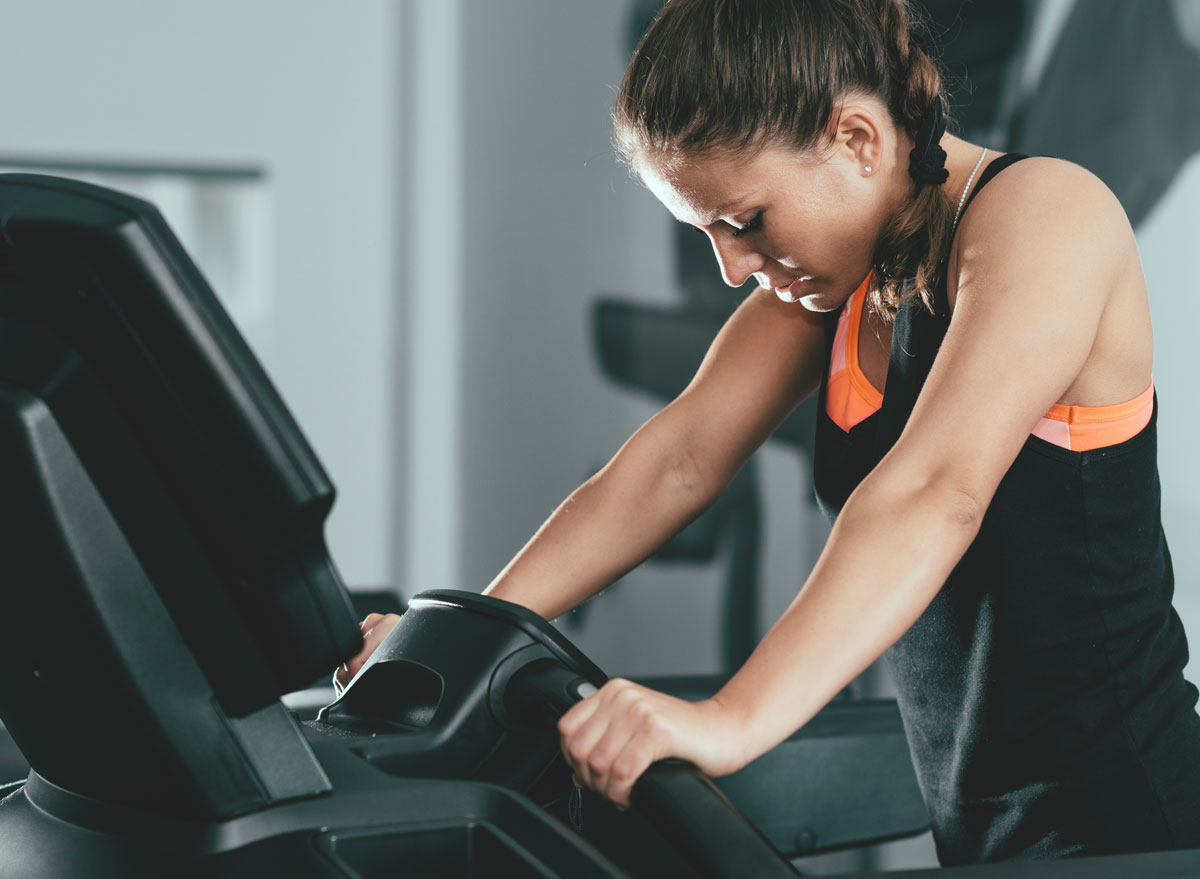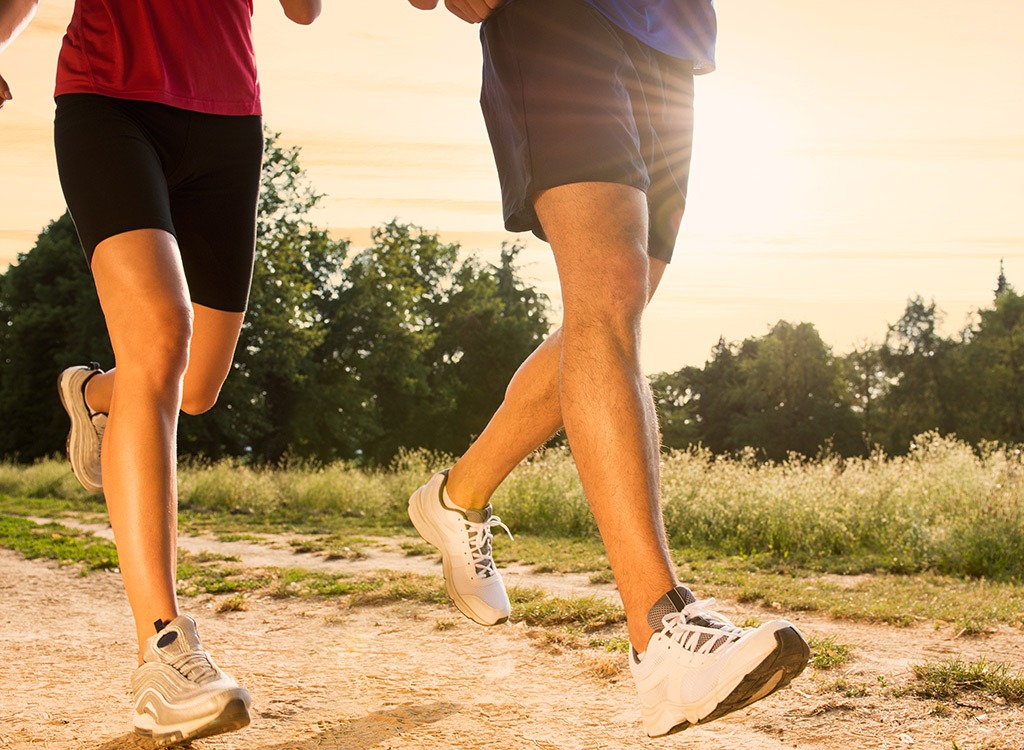One Huge Side Effect of Going for More Casual Walks, Says New Study

A new study published in the journal JAMA Network Open contains at least one alarming statistic: A quarter of all women over the age of 65 are physically incapable of walking just two or three blocks or climbing a single flight of stairs. The researchers cite the “lack of moderate to vigorous-intensity physical activity” as the single biggest culprit for this, which over time manifests itself in mobility disability. The research team, based out of the Herbert Wertheim School of Public Health and Human Longevity Science at the University of California San Diego, also looked at various ways that aging women can combat mobility disability.
After analyzing data of more than 5,000 women who are 63 years of age and older—the data sets were from the Objectively Measured Physical Activity and Cardiovascular Health study, which was conducted between 2012 and 2014 (with a follow-up in 2018)—the researchers concluded that women who simply increase their “light-intensity physical activity” every day—which includes things like “shopping” and going for a “casual walk”—were 40% less likely to suffer from the effects of mobility disability.
“Older adults who want to maintain their mobility should know that all movement, not just moderate-to-vigorous physical activity, counts,” Andrea LaCroix, Ph.D., MPH, chief of the Division of Epidemiology at Herbert Wertheim School of Public Health, explained of the study. “We found that, among older women, light-intensity physical activity preserves mobility later in life.”
The U.S. Department of Health and Human Services recommends that “most older adults participate in at least 150 minutes of moderate-intensity aerobic activity, 75 minutes of vigorous-intensity aerobic activity, or an equivalent combination of each per week. Older adults should also engage in strengthening activities that involve all major muscle groups at least two days a week.” What those figures don’t emphasize, the UC San Diego study notes, is the enormous importance of lighter physical activity during your day. “There is no available guidance on how much light activity people should do, largely because very few studies have investigated it,” the authors note.
But how much light-intensity movement should you do every day? The women in the study who spent the “most time” performing this sort of activity had a 46% lower risk of mobility, and the benefits peaked at 5 hours a day. “The highest levels of light-intensity physical activity are unnecessary,” Nicole Glass, MPH, a doctoral candidate in the San Diego State University/UC San Diego Joint Doctoral Program in Public Health, said in the study’s press release. “After five hours of activity, we observed no further increase in benefit.”
The answer: You should be on your feet walking, shopping, cooking, or gardening for as long as you can—but know that the benefits peak at five hours. Also, it’s worth noting that their findings suggest that these lighter activities did not affect any higher-intensity exercise that some women did. “Whether you exercise or not, higher light-intensity physical activity is healthy,” they conclude.
If you’d like to really reap the benefits of walking more and increase the intensity of your walks in the interest of maximizing your fat burn as well as your mobility, here are four next-level walking workouts. And make sure you’re fully up to speed on What Walking Just 20 Minutes a Day Does to Your Body, According to Science.
The 60-Minute Walking Workout

According to Nike Trainer and Rumble instructor Ash Wilking, here is a simple walking workout that will really get your heart rate up:
- 12-minute warmup: Walk faster than normal for one minute, followed by 30 seconds of high knees or heel kicks. Do eight times total, alternating between high knees and heel kicks.
- 40-minute “work” block: Walk five minutes at a brisk pace, then two minutes at a slower pace. Do eight times.
- 8-minute cooldown: Walk slowly for eight minutes.
For more reasons why you should walk more every day, make sure you’re aware of the One Major Side Effect of Sitting on the Couch Too Much, Says New Study.
The 12-3-30 Workout

This is a high-difficulty walking workout made famous by a TikTok user and confirmed by health experts:
- Set your treadmill to an incline of 12.
- Set your speed to 3 mph.
- Walk for a half-hour.
The Walk-Jog Hybrid Workout

Jeff Galloway introduced this walking/running hybrid workout to Health. It involves adding short bursts of jogging into your walking workout as a mini-interval set, which will help with calorie burn and “boost appetite-suppressing hormones.” To complete the routine, do this:
- Go for a 10-minute walk.
- Jog for five to 10 seconds every minute.
- Continue to add minutes to the overall workout until you hit 30 minutes.
The “Sprint” Workout

This routine, which can burn as much as 175 calories, according to Prevention, requires you to:
- Warm up with a brisk walk for five minutes.
- Walk “as fast as you can” for 10 minutes.
- After gauging how far your went, turn around and return at a brisk pace, and cool down as you approach your starting point.
And for more great fitness advice you can use immediately, read up on The Single Most Effective Way to Work Out Every Day, Say Psychologists.








